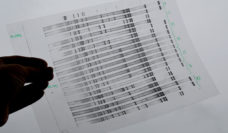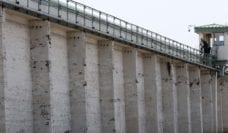Following many years of growth in the 1980s through the early 2000s, prison populations in many US states have been routinely decreasing since 2009. In 2017, the nationwide prison population (which includes prisoners held in both state and federal institutions) fell below 1.5 million for the first time since 2004.
In our recently published paper, we explore potential reasons for these declines, focusing on the role of policy processes in driving reforms. The reforms we consider are legislative changes that either 1) reduce prison populations (by, for example, expanding early release programs or changing sentencing procedures), 2) expand community corrections (including diversion strategies), or 3) facilitate the community re-entry of ex-offenders. The Vera Institute has compiled information for every US state about the adoption of these three types of legal reforms in 2013 and in 2014 and 2015. Interestingly, most states adopted more than one of these reforms between 2013 and 2015.
The theoretical framework we employ, critical junctures, posits that certain historical moments offer unique opportunities for policy stakeholders to gain greater agency over their decisions. At such moments, policy change suddenly becomes probable. In this scenario, the 2008 financial crisis functioned as a wake-up call that alerted politicians and the public to the tremendous costs of imprisonment.
We explored whether internal pressures within a state, such as a high debt burden and/or high incarceration rates, increased the need for states to reduce costs associated with incarceration. We compared this explanation alongside several other explanations for reform, including: the political orientation of state legislators and the liberalness or conservatism of state citizens; declining crime rates; whether states had already adopted legal changes to reduce incarceration during 2009; and other potentially relevant predictors. To ensure temporal ordering, we measured the predictor variables in the preceding period of 2008 to 2012 to explain policy changes in 2013 to 2015.
The theoretical framework we employ, critical junctures, posits that certain historical moments offer unique opportunities for policy stakeholders to gain greater agency over their decisions.
To gain a more comprehensive understanding of the complex and nuanced factors that prompt states to make legal changes, we present both case comparisons and statistical analyses in our paper. We find that internal pressures within a state – combining high pre-existing levels of incarceration and state debt – are important triggers of reform. Specifically, we find that states with both high levels of incarceration and high levels of debt in 2008-2012 were most likely to adopt reforms in 2013-2015. Correspondingly, states with the lowest levels of incarceration were less likely to adopt legal changes to reduce incarceration. Both of these findings align with our hypothesis that the build-up of internal pressures within a state can constitute a critical juncture, launching that state toward reform.
Other study findings are more complex to interpret. For example, we see the greatest amount of legal changes in states with conservative-leaning populations but Democratic-controlled state governments. The next greatest amount of legal changes, however, occurs in states with liberal-leaning populations and Democratic-controlled state governments. So ideological alignment and diversity between citizens and government are both associated with these reforms. Traditional party and ideological lines may be less relevant here, as criminal justice reform has gained support from diverse alliances across the political spectrum.
Overall our findings suggest that no one explanation holds for all states; no “silver bullet” variable universally prompted the adoption of incarceration-reducing reforms during 2013-2015. Instead, distinct constellations of factors made change possible in different states.
Since we focus on the adoption of reforms, a lingering question is whether the factors we identify also predict actual declines in states’ incarceration rates. This question is the focus of a follow-up paper currently in preparation, in which we examine how policy reforms and underlying structural conditions – such as economic conditions or crime rates within states – can together facilitate incarceration declines.
Photo by Tom Blackout on Unsplash

















